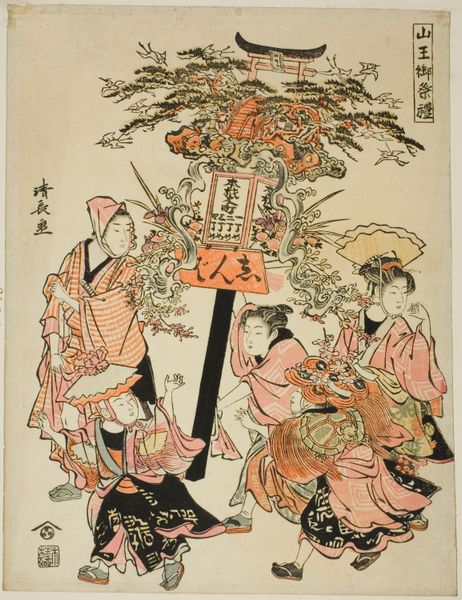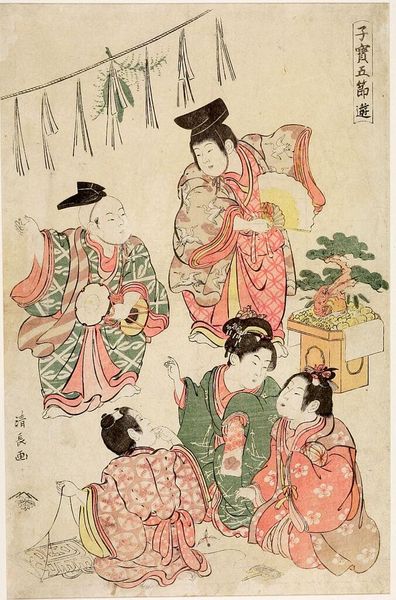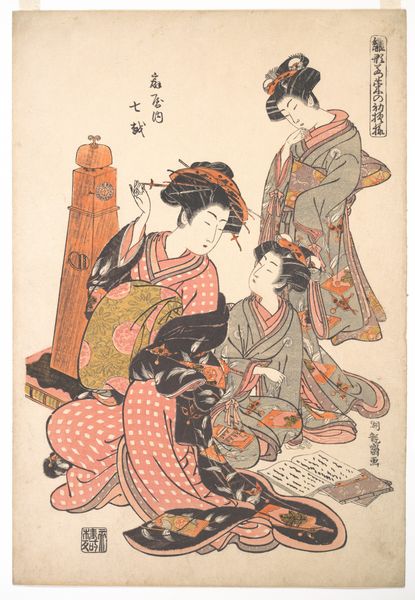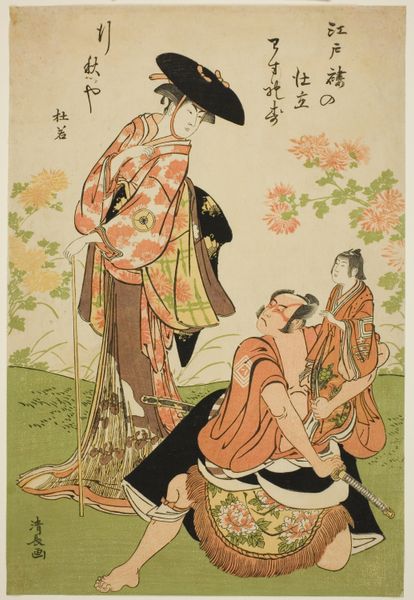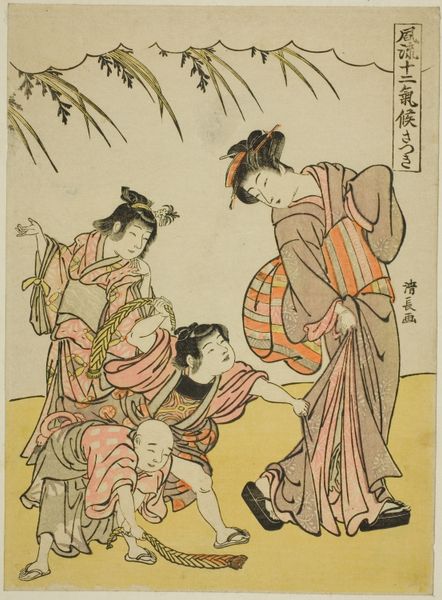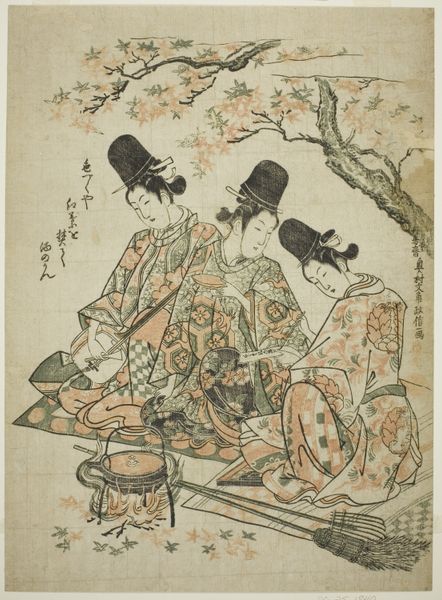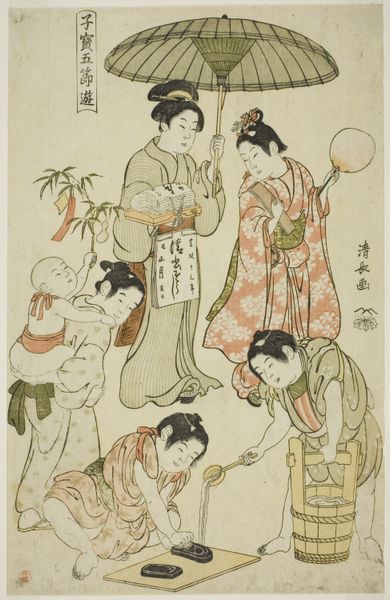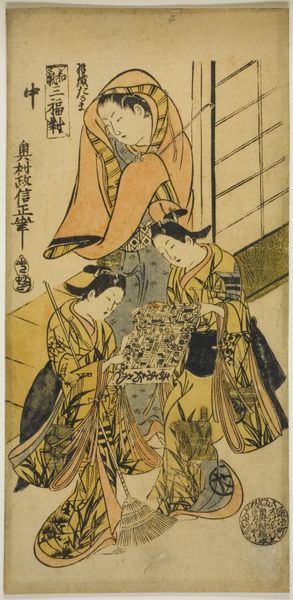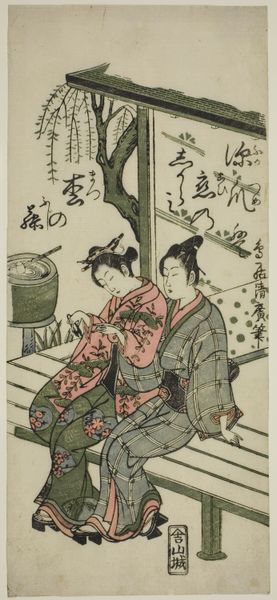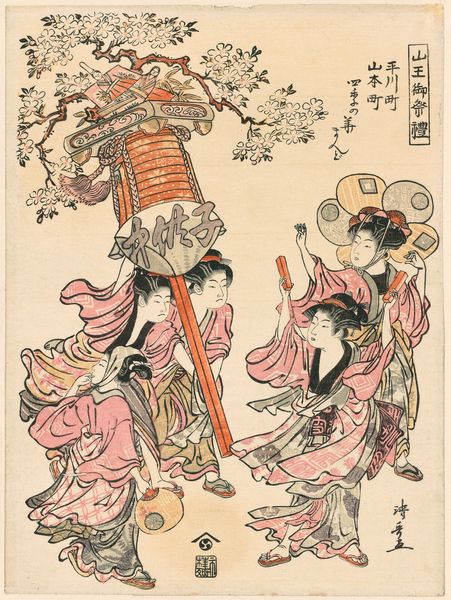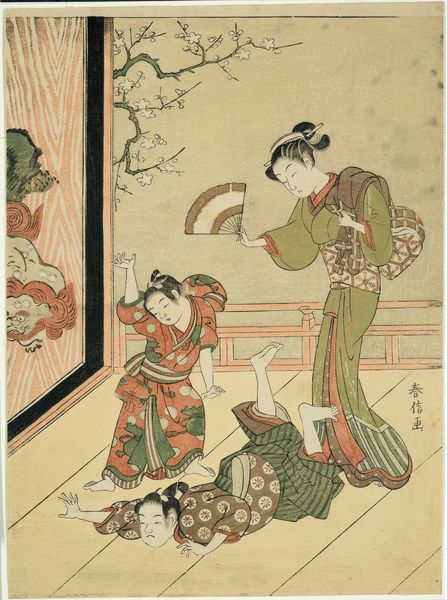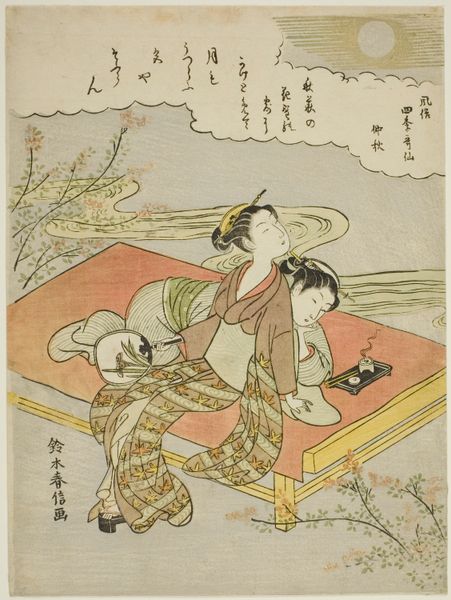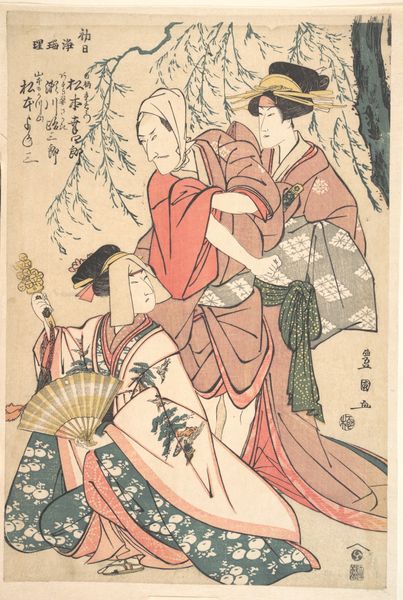
The New Year's Festival, from the series "Precious Children's Games of the Five Festivals (Kodakara gosetsu asobi)" c. 1801
0:00
0:00
print, woodblock-print
#
ink painting
# print
#
asian-art
#
ukiyo-e
#
japan
#
figuration
#
woodblock-print
#
genre-painting
#
history-painting
Dimensions: 38.5 × 25.7 cm
Copyright: Public Domain
Editor: This woodblock print, titled "The New Year's Festival, from the series 'Precious Children's Games of the Five Festivals,'" was created around 1801 by Torii Kiyonaga. It feels so light and airy! What stands out to you about this work? Curator: Well, consider the context. Ukiyo-e prints like this weren't "high art" initially. They were mass-produced, a commodity. What's fascinating is the labor involved, the carving of the woodblocks, the specific inks chosen, and the highly specialized process to produce color. Can you see how the arrangement and subject may reflect the consumption of festivals as leisure activity by urban audiences at the time? Editor: That's an interesting way to look at it! I was so focused on the children depicted that I didn't consider its consumer context. Does that influence your perception of this piece? Curator: Absolutely. This wasn't meant for a palace. This was for the burgeoning merchant class. Look closely at their clothes - how meticulously detailed each pattern, the richness of the colors; details meant to resonate with its original consumers. How the makers catered to this new type of art buyer and portrayed an aesthetic vision reflective of this market force interests me far more than a solely aesthetic experience. Editor: So, seeing it as a product of its time, for a specific consumer group, is key to its understanding? Curator: Precisely. It prompts questions about who made it, who consumed it, and how its very existence was shaped by the material conditions of 19th century Japan. These are very different factors when looking at the grand religious altarpieces or large family portraits! Editor: I’ve never thought about it like that before, I suppose considering material concerns helps frame it in relation to its social world. Curator: Indeed, and hopefully encourages all to examine more deeply how our perceptions about artistic value has shifted.
Comments
No comments
Be the first to comment and join the conversation on the ultimate creative platform.
